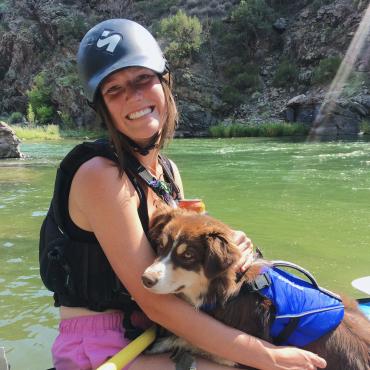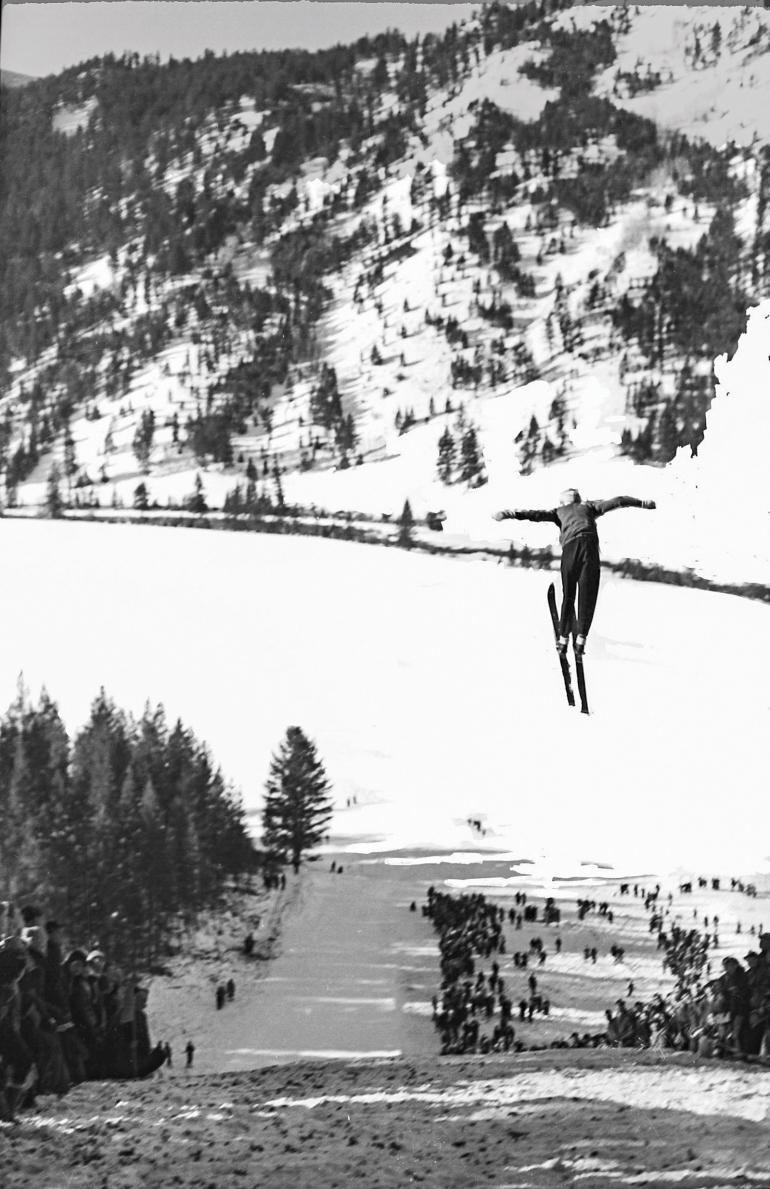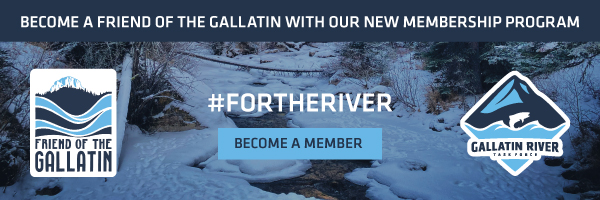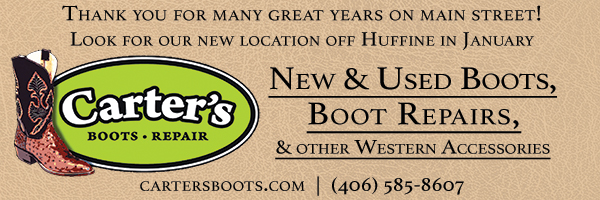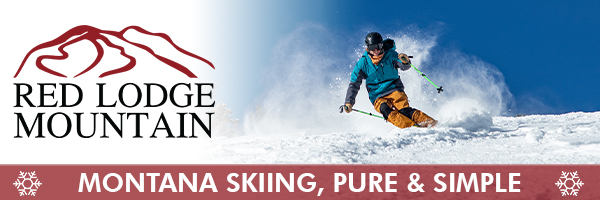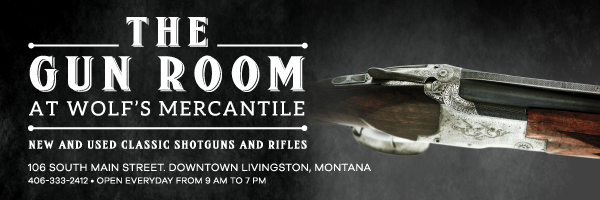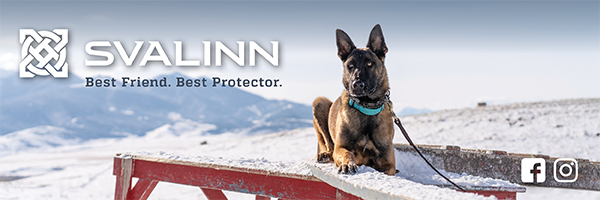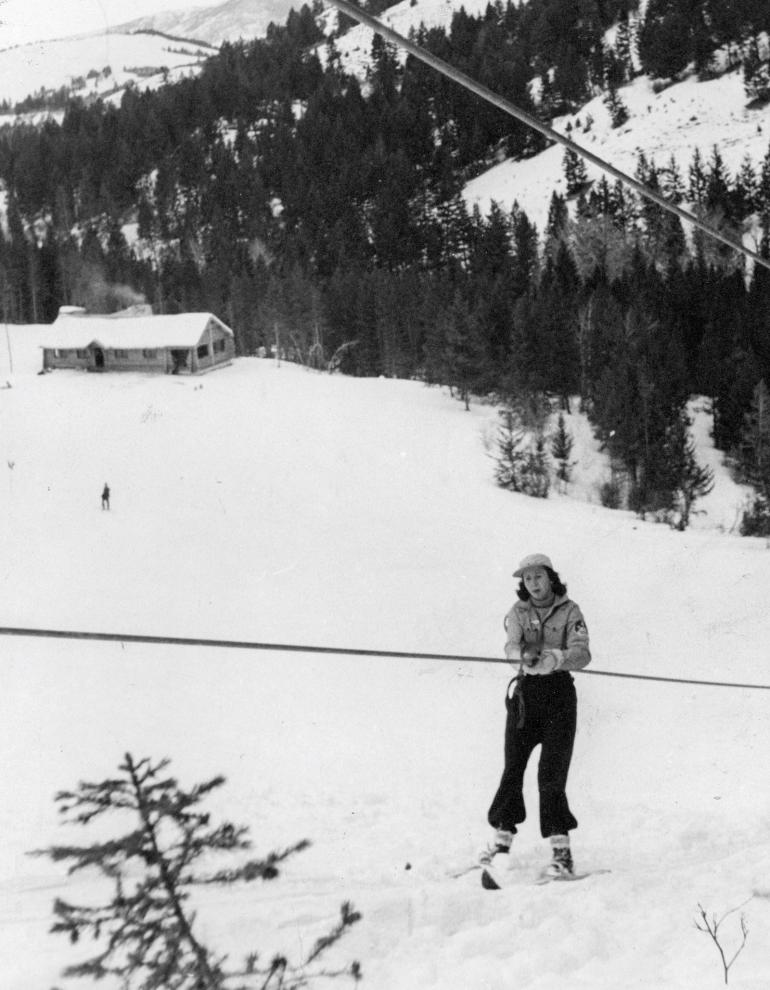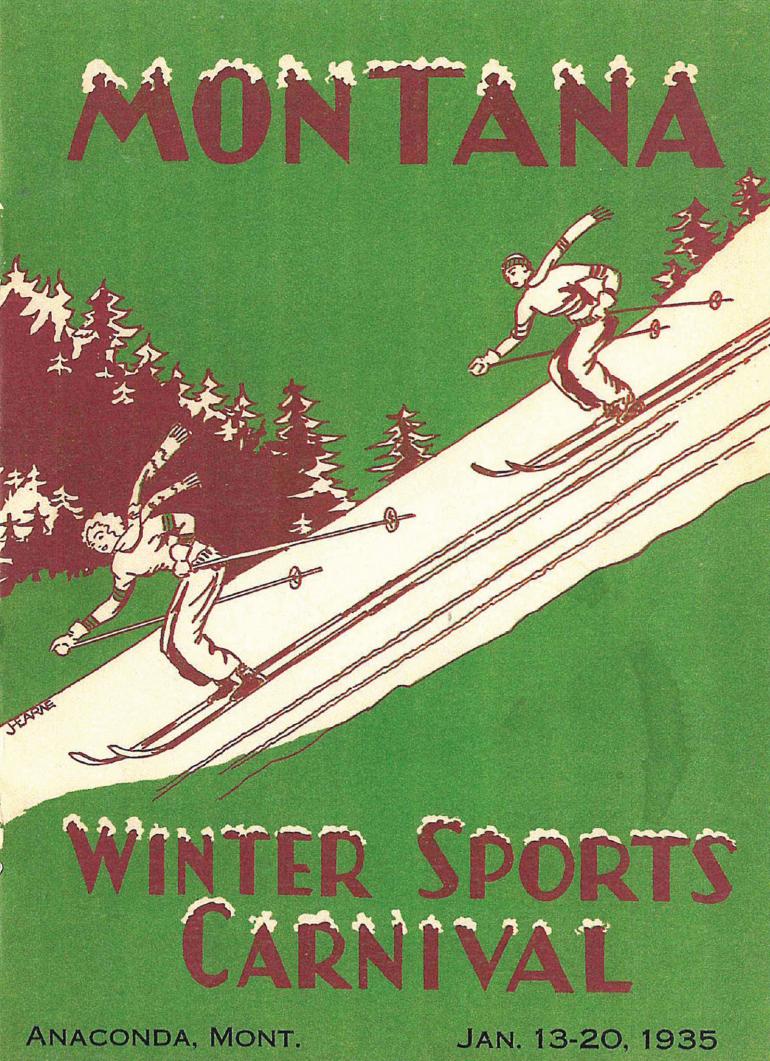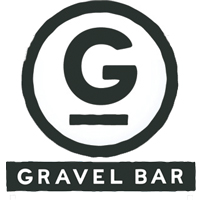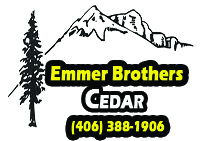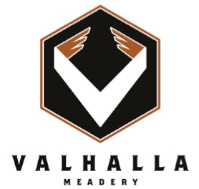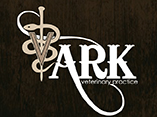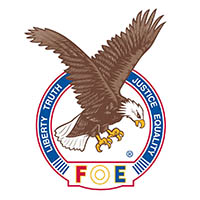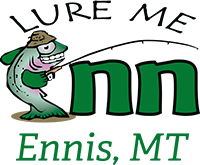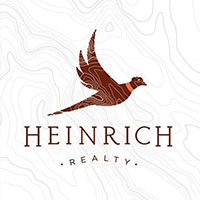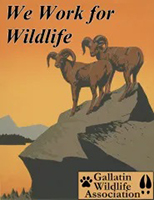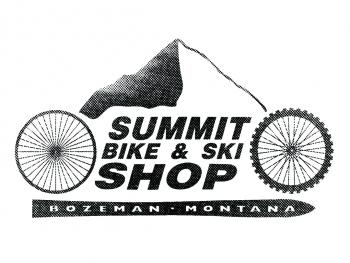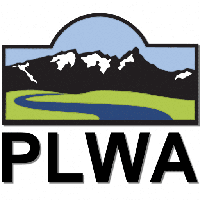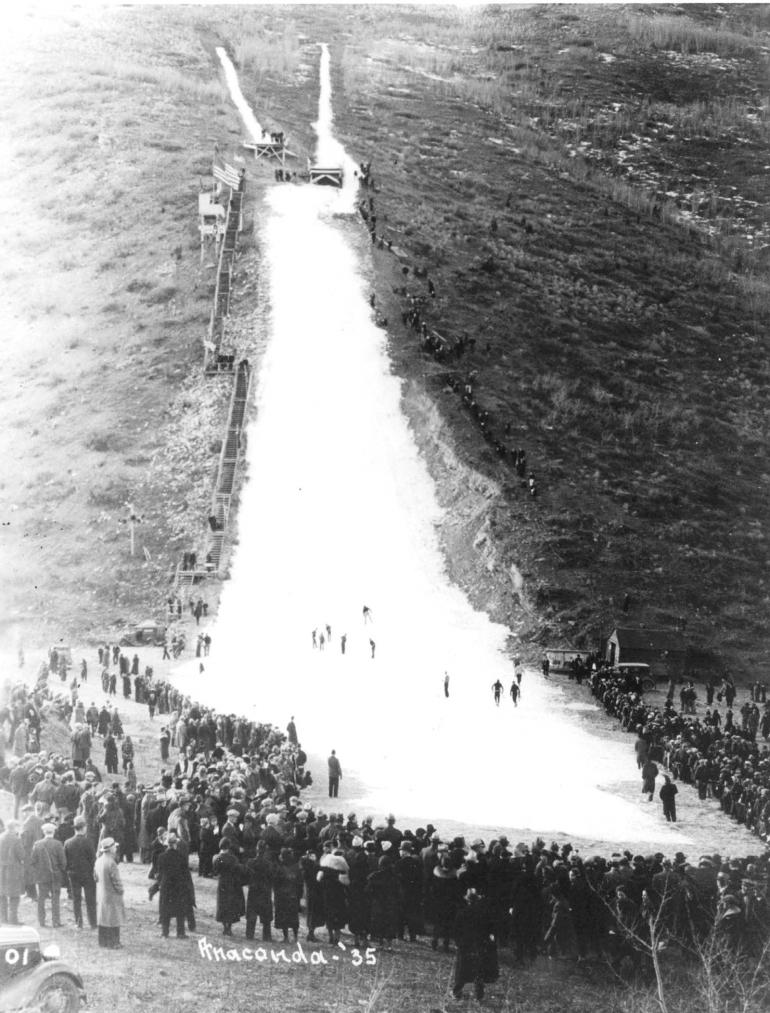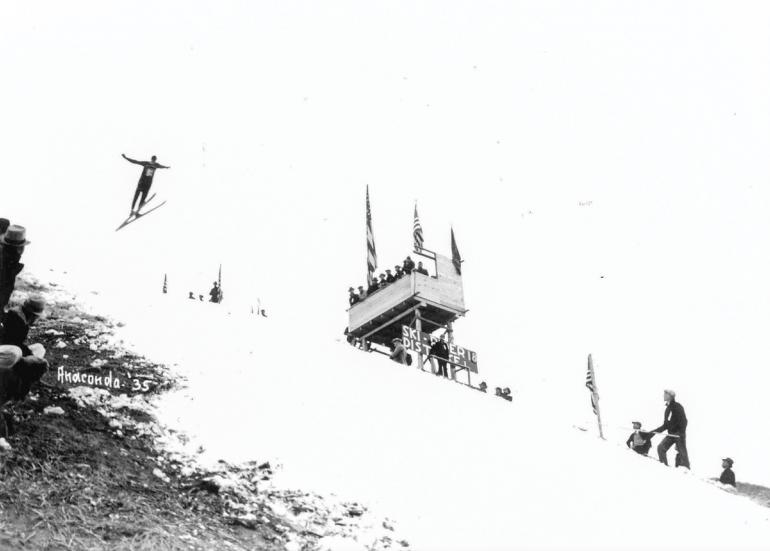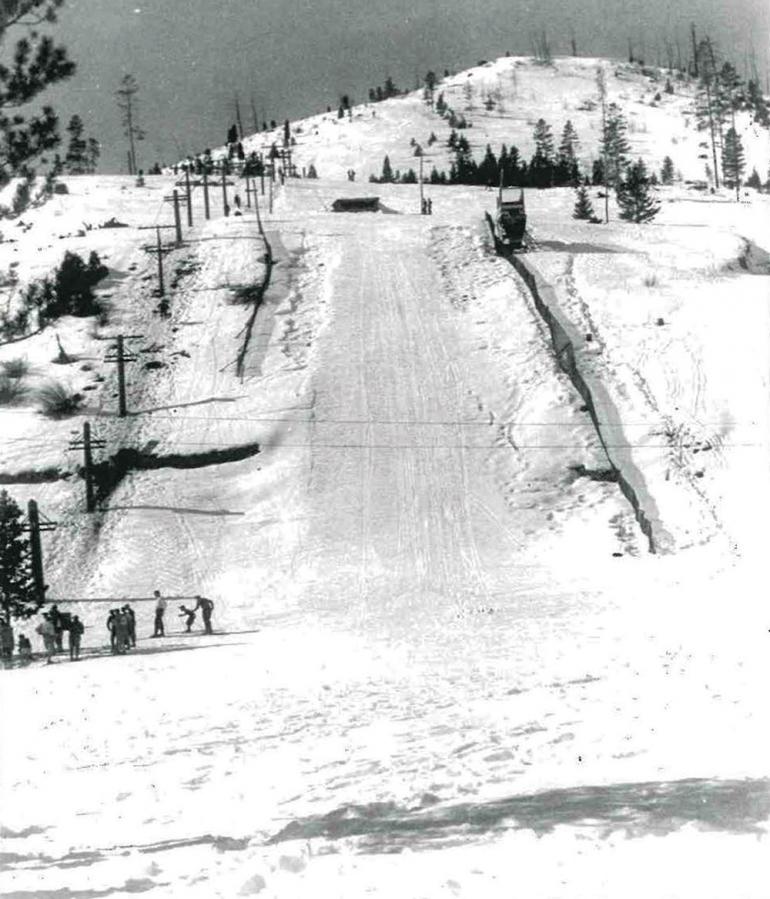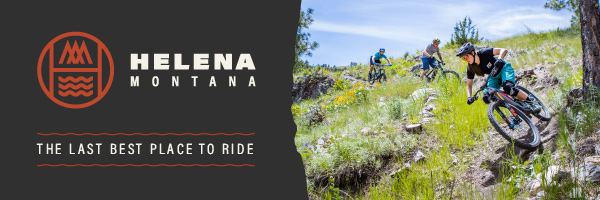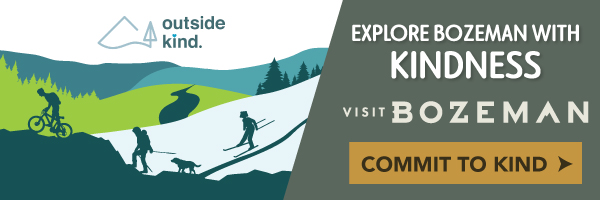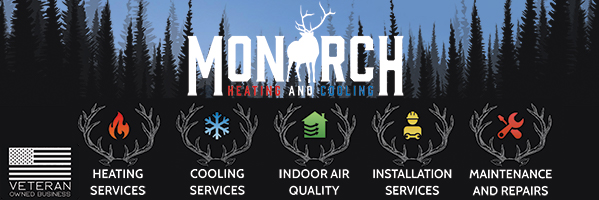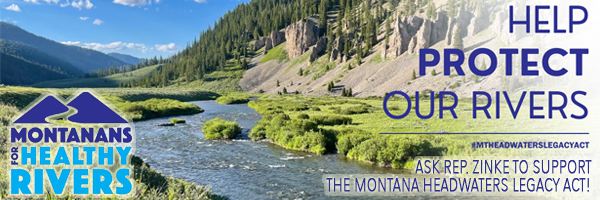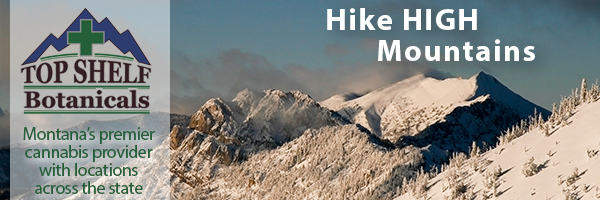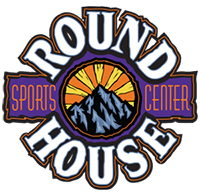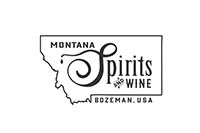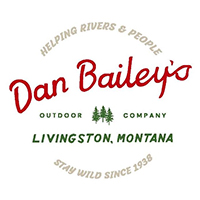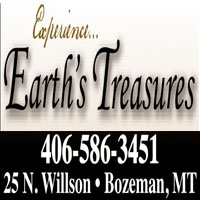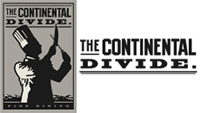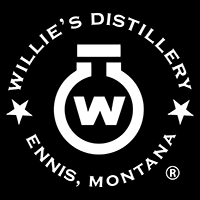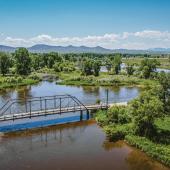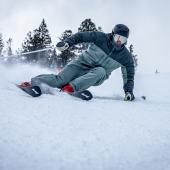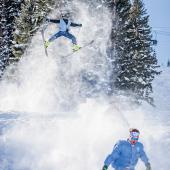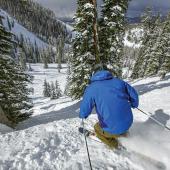First Tracks
Defunct Montana ski hills.
Before the days of high-speed ski lifts, trams, and advanced avalanche mitigation, Montana’s ski scene was simple. It was an era of rope tows, wooden skis with leather straps, and thick wool layers. Not every ski hill, however, could keep its ropes towing and its lifts turning. Some left nothing behind, save for a legacy of snow play and maybe an old T-bar.
Karst Kamp
Karst Kamp, also known as the Karst Stage Stop Inn, sat 35 miles south of Bozeman in Gallatin Canyon. Starting out as a summer-season dude ranch, Pete Karst later added guest cabins and started the Karst Stage, which offered transportation to this paradise-found for locals, miners, and visitors from across the region. In 1937, Karst installed a rope-tow to draw in skiers, as well as a bar and saloon to entice the mining crowd. Ski races and ski jump competitions were hosted annually, bringing in ski enthusiasts from around the country. Due to its steep terrain (Karst didn’t cater much to beginner or intermediate skiers) and wartime driving restrictions, the operation began to slow down throughout the 1940s. In the early ’50s, Karst sold the property and retired. The rope-tow is no longer installed, but the cabins remain and the Karst Stage still transports visitors around Southwest Montana—with its original name still intact.
Pine Hill
Pine Hill sat within the Story Hills, west of the fish hatchery up Bridger Canyon. In 1938, Adolph Petersen, a Norwegian ski jumper, officially opened it as Bozeman’s first ski area with an old Cadillac engine to make a rope-tow. Many had skied the area before, even traveling to the top by horse to do so, but this marked the beginning of Bozeman’s uphill transportation. Pine Hill’s gentle slope was good for beginners and acted as a training ground for many skiers. But due to rope-tow malfunctions, unpredictable snowfall, and the mild slope, attention quickly shifted to bigger mountains nearby.
Bear Canyon
Bear Canyon Ski Area, nine miles northeast of Bozeman, opened closely behind Pine Hill in 1938. Previously used to host Fort Ellis and later a logging operation, Bear Canyon undertook a transformation with sights set on skiing. The Bozeman Kiwanis Club sponsored a “Works Progress Administration” project to lease out land for the ski area. Adolph Peterson, once again, donated an old car motor for a rope tow, which was constructed with all volunteer help. The first ski race in Bear Canyon took place in the spring of 1938, held between fraternities from Montana State College (now MSU). Bear Canyon had a slow start while in the midst of World War II, but after the war skiing boomed on the hill. Local residents and college students flocked there en masse, but soon set their eyes on a bigger bounty: Bridger Bowl. Bear Canyon hosted its final day of public skiing on April 2, 1954. It remained open to private parties for several years on a rental basis, and the lease was eventually purchased by Mt. Ellis Academy in 1959. School installed a one-seater chairlift, which was removed in 1975 when cracks were discovered in its towers. The ski hill sat dormant until 1988, when a T-Bar and lights were installed. The academy still uses the ski area today, and permits local skiers to skin up and ski down—so long as they respect posted rules.
Lion Head
Skiing in West Yellowstone picked up beginning in the 1930s, when a 200-foot rope-tow and ski school opened along the banks of the Madison River, about two miles north of town. The area closed in the 1940s, but a revival attempt was made after World War II. In 1948, the U.S. Forest Service issued a permit to construct a larger ski area near Targhee Pass. In 1950, Swiss ski instructor Hans Sarbach was hired to build it. Lion Head, also called Yellowstone Ski Bowl, operated a single chairlift—1,900 feet long and rising 500 feet—that could carry 300 skiers per hour. The lift allowed access to Lion Head Bowl, as well as other runs on the face of Mt. Lion Head. There was plenty of snow to keep the lift turning, but due to West Yellowstone’s small population, lack of transportation in the area, and difficulty plowing heavy snow from the access road, the lift stopped turning in 1963.
Anaconda
Skiing influences in Anaconda began in 1935, when the Anaconda Ski Club began hosting winter carnivals, specifically for ski-jump competitions. After years of interest in ski jumping, an alpine hill was sought out. Wraith Hill (also known as Silver Lake and Cable Mountain), 15 miles west of Anaconda up Lagger Gulch, opened in 1936, and was a home for several ski-jump competitions, a rope-tow, and was one of the first areas in Montana to offer night skiing. The lift, dubbed the “Toonerville Trolly,” was unveiled in 1939—eight chairs along a 700-foot-long lift. Then, in the ’50s, a warming hut was added to the lineup. But as the snowpack dwindled, upkeep costs outpriced what the ski club could sustain. And with a growing nearby development (Discovery Basin) drawing away skiers, Wraith Hill closed for good in 1983. The T-bar is still standing today, and many hikers and backcountry skiers can be found climbing the old ski runs.
Beef Trail Ski Area
Beef Trail, eight miles southwest of Butte, began as a lease offering from a local cattle rancher whose property had an elevation gain of 1,500 feet with a 20-degree ridge. With an old one-inch rope for the tow and a 1931 Model-A Ford engine, Beef Trail came to fruition. The ski area was built with all volunteer labor and personal money from community members. On New Year’s Day in 1939, the eight-mile-an-hour rope tow opened to the public. Wartime conditions slowed down skier visitation, but the hill persevered, with three rope tows operating in the late 1940s and high school ski racing sustaining operations throughout the ’50s. Then, in 1970, a T-bar was introduced, and more modern snowmaking equipment was purchased shortly thereafter. Despite these efforts, the ski area grappled with persistent snow shortages, insufficient financial resources, and the opening of nearby Discovery Basin. Beef Trail went to the slaughterhouse in 1988.
Z Bar T Ski Area
In 1959, the Wilson family opened a ski area on both Forest Service land and a portion of their own private holdings about two miles east of Pipestone Pass. The name was derived from their cattle brand—which is also emblazoned on the wall of the Western Café in Bozeman. The Wilson family built the operation from the ground up, including a chalet, ski patrol A-frame, ticket stand, rope-tow, a T-bar, and a Pomalift (which uses a bar between the legs). But by the spring of 1976, financial problems struck due to poor snow conditions and difficulty maintaining the access road. The land was subsequently sold, and the original chalet is now a private home. The old buildings and T-bar towers are visible, but ski runs have been grown over.
Jack Creek Ski Area
11 miles east of Ennis, Jack Creek Ski Area was developed by the Ennis Ski Club in the 1940s. It started off with one rope-tow, but a lift and T-bar were installed in 1955. Jack Creek hosted prominent ski races in the 1940s and 1950s. With its location on the back side of Lone Mountain, the winding, primarily one-lane access road made attendance difficult, leading to the ski area’s closure after the 1967-68 winter.
This season, when you clip into bindings, bundle up under layers of Gore-Tex, and hop on a high-speed quad, remember that sliding around on snow wasn’t always this easy. Here’s to carrying on Montana’s ski legacy.


